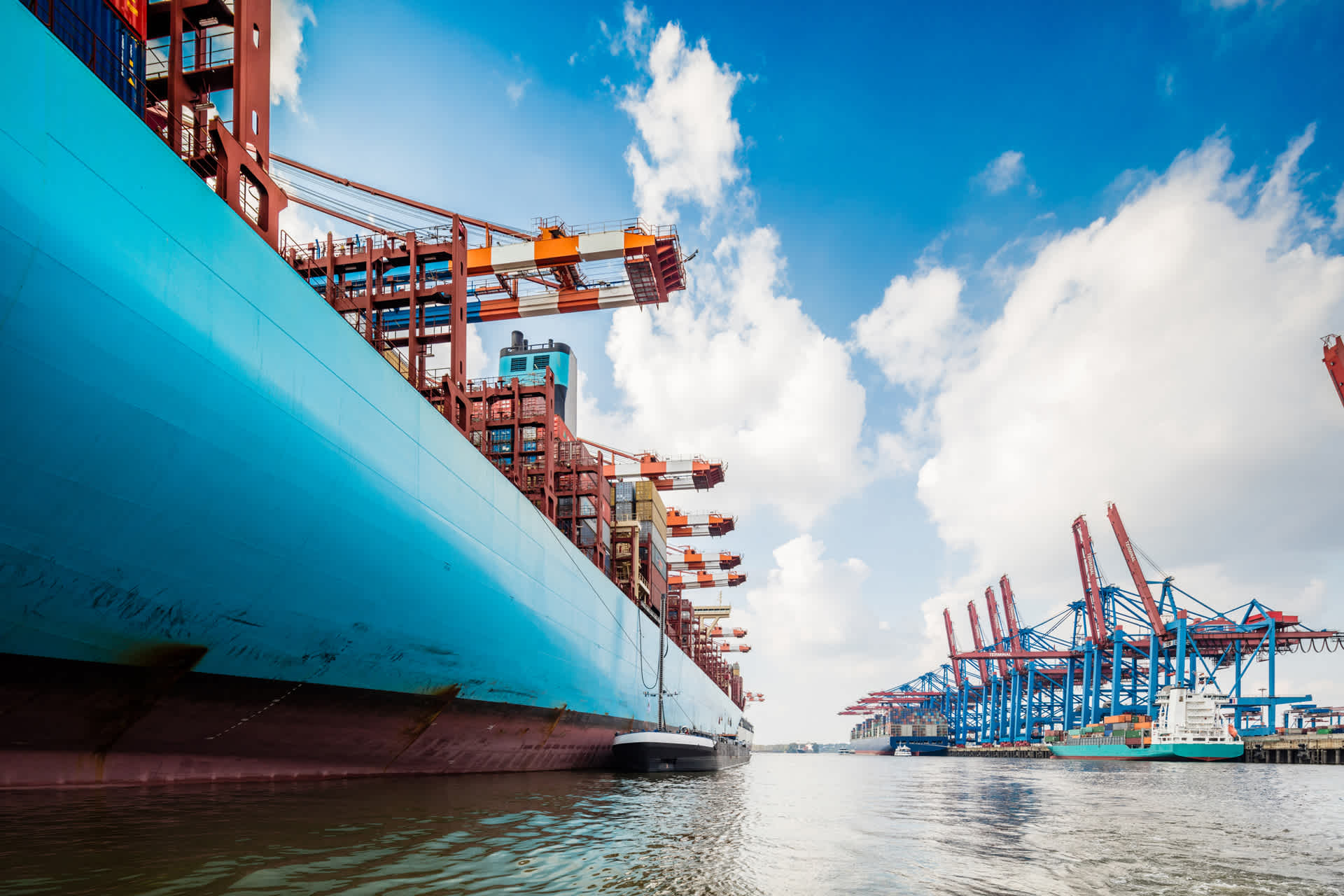Global Logistics Update
Freight Market Update: October 11, 2022
Ocean and air freight rates and trends; customs and trade industry news plus Covid-19 impacts for the week of October 11, 2022.
Freight Market Update: October 11, 2022
Logistics Rewired: Air Market Update | Thurs, October 13 @ 9:00 am PT / 12:00 pm ET
The State of Trade: What is a “Worker Centric” Trade Policy? | Tues, October 18 @ 9:00 am PT / 12:00 pm ET
North America Freight Market Update Live | Thurs, October 20 @ 8:30 am PT / 11:30 am ET
Ocean Freight Market Update
Asia → North America (TPEB)
- No changes in demand after Golden Week:
- U.S.: Transpacific East Bound (TPEB) demand still remains quite flat despite the planned blank sailings through Week 42, which is the week expected to see the majority of TPEB capacity removed. Port and rail congestion is seen at the major US gateways to some extent, most notably at Houston and Baltimore for vessel dwell (17-20 days) and Los Angeles/Long Beach as rail dwell (17 days).
- Canada: Market and rate conditions are similar to the U.S. Vancouver and Prince Rupert both saw a deterioration in the vessel count and berthing delays, with an improvement in rail backlog compared to last week.
- Rates: Remain soft on most origin-destination combinations.
- Space: Open.
- Capacity/Equipment: Open, except in a few pockets.
- Recommendation: Book at least 2 weeks prior to cargo ready date (CRD) and keep in mind upcoming blank sailings.
Asia → Europe (FEWB)
- China has just returned from Golden Week holidays. Demand is slowly recovering this week. Some factories have extended their holiday closure due to already sufficient production output. There is a significant blank sailing program in weeks 41 and 42—space is readily available but schedule reliability is affected. Port congestion in Europe continues to cause delays and late return of vessels to Asia.
- Rates: Ongoing pressure on spot rates due to low demand.
- Capacity/Equipment: Generally open space despite the impact of blank sailings and vessel delays.
- Recommendation: Allow flexibility when planning your shipments due to anticipated congestion and delays.
Europe → North America (TAWB)
- Capacity is increasing. From mid-October some alliances are adding bigger vessels to the U.S. East Coast (USEC) loops, which is likely to put downward pressure on freight rates in the following weeks.
- Rates: Indexes showing rates are dropping but not as rapidly as on other trades. Most Q4 Freight All Kinds (FAK) rates are an extension of Q3 rates.
- Space: Still very tight on the USEC with some space open for direct routing to the U.S. West Coast (USWC). Some space is available out of Turkey.
- Capacity/Equipment: Equipment availability remains the biggest challenge for all EU origins, particularly in the Mediterranean region. Low empty stacks at inland depots, prioritize pick up from the Port of Loading.
- Recommendation: Book 4 or more weeks prior to CRD. Request premium service for higher reliability and no-roll.
Indian Subcontinent → North America
- Rates continue to drop following the overall trend of global ocean freight. It is however important to note that Indian Subcontinent (ISC) demand is still holding on some key services to the U.S.
- Rates: changes occurring with more velocity across the market.
- Capacity/Space: Space is available across most lanes at standard (non-premium) rates. Decreases in port congestion globally are effectively increasing capacity while blank sailing programs implemented by ocean carriers are pulling capacity out of the market.
- Equipment: Smaller ports and inland container depots (ICD) will continue to have sporadic deficits based on import/export cargo mix.
- Recommendation: Take advantage of declining rates.
North America → Asia
- USEC ports continue to see challenges with vessel congestion. Ongoing erratic vessel schedules are causing significant issues with changes in posted earliest return dates and vessel cut-offs at the port. For USWC, arrivals and available capacity for Los Angeles is generally open whereas Oakland and Seattle remain more fluid.
- Rates: No GRI’s announced for October or November.
- Capacity/Equipment: Deficits on containers and chassis continue to plague Inland Port Intermodal (IPI) origins. Chicago remains the most reliable. Availability for standard equipment has not been an issue for most ports. Capacity from the U.S. Southeast to India remains constrained due to the ongoing omissions of Charleston and Savannah. Overall capacity for Indian ports requiring a transshipment service remains very tight from both the USEC and USWC.
- Recommendation: Please place bookings 4 weeks prior to vessel Estimated Time of Departure (ETD).
North America → Europe
- Congestion issues in North Europe, due to both the recent labor actions at German ports and the current actions at UK ports, are expected to persist.
- All carriers continue their booking stop for shipments to Ukraine, Russia, and Belarus.
- Rates: 2 carriers with the Ocean Alliance have announced nominal GRI’s for October.
- Capacity/Equipment: USEC service to Northern Europe has capacity available however Savannah has irregular challenges due to it being omitted on certain vessel strings. Vessel capacity from the port of Houston has been very tight due to a significant increase in demand and delayed vessels.
- Deficits are still plaguing many IPI origins. Availability for standard equipment at ports has not been an issue, but special equipment is hard to come by.
- Recommendation: Please place bookings 3 to 4 weeks in advance for East or Gulf Coast sailings and 6 weeks for Pacific.
North America Vessel Dwell Times

Air Freight Market Update
Asia
- N. China: Flights have resumed after the Golden Week holiday, however demand is still slow to pick up. Rates continue to maintain at low levels.
- S. China: Capacity has returned to the market after the long holiday, but that market remains soft. Mainland China rate levels have decreased while rates ex-Hong Kong have increased.
- Taiwan: The market is slack and rates have decreased compared to last week.
- SE Asia: The export markets in the Southeast Asia region continue to be soft with few signals of demand increasing.
Europe
- Demand remains at a lower level and is expected to peak before Black Friday. Capacity available in the market continues to exceed current demand levels.
- Expect capacity to drop and rates to rise slightly as passenger flight frequency decreases in the coming months, with airlines changing over to winter schedules.
- Jet fuel prices have been increasing for the past 2 weeks, which might be reflected in airline fuel surcharges if the upwards trend persists.
- Build a forecast for your expected growth in demand between now and Black Friday.
Americas
- Export demand remains steady from all markets, aside from Hong Kong, which has seen a large increase.
- US airports are running at a normal pace.
- Capacity is opening up further, especially into Europe.
- Rates remain stable week over week.
- Air Canada has announced beginning Oct. 1st, they will operate 2 non-stop freighters per week from St. John’s (YYT) to Frankfort (FRA). As well as 3 non-stop freighters per week from YYT to Madrid (MAD).
- There is a bit of a shortage of trucking capacity, as well as congestion at the airports, which is leading to a longer than normal dwell time for inbound cargo. This has slowly been improving and is expected to clear up in Q1.
Trucking & Intermodal
UK/Europe
- UK trucking traffic is being impacted by extremely low water levels across the continent. This has brought inland navigation close to a full stop. Barges temporarily cannot go on the Rhine past Cologne, blocking the whole Western/South-Western part of Germany from being serviced via waterways. Low water fees apply for inland barge terminals in Germany & the Netherlands, as barges can only take half loads. This is putting pressure on Rotterdam/Antwerp capacity, as 38% of all containers move to/from Rotterdam via waterways, resulting in overbooked rail and truck options.
Americas
Import/Export Market Trends
- Congestion continues at Canadian ports and rail ramps. Yard utilization at Vancouver and Prince Rupert is >95%. Import rail dwell in Vancouver is over 7 days, and over 14 in Prince Rupert.
- Chassis shortages continue in inland markets: Ohio Valley, Memphis, Dallas, Chicago.
- Ports in Florida and elsewhere in the South East have been greatly impacted by Hurricane Ian. Tampa and Jacksonville were closed at the end of September. Closings or limited operations occurred in Miami, Savannah, and Charleston.
- LA/LB is largely improving, though still congested with imports.
- Oakland is seeing continued delays due to import volume and labor shortage, along with high yard utilization.
US Domestic Trucking Market Trends
- Hurricane Ian affected trucking capacity, road infrastructure, and port operations throughout the Southeast region.
- Tender rejections by carriers has decreased by 77% YoY from 22.8% to 5.25%, meaning carriers are accepting more loads due to having more capacity.
- Spot rates in the market have bottomed out to a 16-month low, down ~35% YTD, while contract rates fell in recent weeks after edging up for several months due to FSC schedules.
- Load-to-Truck ratios are down ~30% YoY, which is the key barometer for supply/demand in the marketplace.
Customs and Compliance News
Food Facility Renewal Period Opens
The Food Safety Modernization Act requires U.S. and foreign food facilities engaged in manufacturing, processing, packing, or holding food for consumption in the United States to submit biennial registration information to FDA every even-number year. Failure to register may result in the revocation of a facility’s ability to import or export food into or from the U.S. The current renewal period will close December 31, 2022.
Commerce Adds 57 Entities to Entity List
On October 4, the Department of Commerce published a final rule that 57 entities have been added to the Entity List in response to the Russian Federation’s invasion of Ukraine, effective September 30. Exports to these entities will require a license for all items subject to the Export Administration Regulations, and applications for such licensees will be generally reviewed under a presumption of denial.
Factory Output news
- United States: New orders for manufactured goods remained unchanged in the month of August. Inventories for manufactured durable goods increased 0.2% in the same month, marking the nineteenth consecutive monthly increase for the category. Source
- United States: Forty-six percent (seasonally adjusted) of small business owners reported they could not fill job openings, according to the NFIB Small Business Optimism Index. The transportation, manufacturing, and construction sectors reported the most difficulty in finding labor. Source
- Mainland China: China's garment industry logs revenue and profit growth in the period from Jan-Aug. Source
- Taiwan: Export volumes decreased 5.3% YoY, ending its 26 months growth streak. Source
- Vietnam: Gross Domestic Product increased 13.67% in the third quarter as manufacturing rebounds. Source
- Cambodia: Will Cambodia overtake Bangladesh and Vietnam in apparel exports to Canada? Source
- India: Amazon India has been granted approval to operate 24/7 in New delhi together with 314 other applicants. Source
Freight Market News
Port of NY/NJ Implements Container Dwell Fee
According to Supply Chain Dive, the Port of New York and New Jersey’s updated container dwell fee went into effect on Saturday, which mandates carriers to balance their inbound and outbound container volumes. Previously, ocean carriers were required to remove 10% more empty containers than their import quarterly total.
Air Market Expects Muted Peak Season Amidst Declining Rates
Across the air cargo industry, rates and volumes continue to decline, as reported by The Loadstar. In September, rates dropped 19% YoY along Hong Kong to North America, while 42% out of Shanghai. This is exacerbated by lower air volumes, which continue to weaken.
Flexport Research Updates
Taking Stock of the Supply Chain Crisis - The State of Trade
Flexport’s State of Trade Webinar on September 28th, 2022 found evidence of an improvement in the state of logistics networks, though it is stronger in pricing than in the timeliness of shipping. Looking ahead, there are considerable unknowns including persistently high consumer spending and the evolution of corporate inventory strategies.
Weekly Economic Report: Work in Progress
Last week’s U.S. jobs report offered both a very low unemployment rate and a small decrease in the labor force. On balance, though, the labor market looks historically strong. This offers little sign of a recession and little relief for Fed concerns about inflation.
A quick reminder: the weekly economic report is now its own newsletter! You can sign up here to have these insights delivered directly to your inbox each week.
Air Timeliness Indicator: TPEB ↓ @ 9.5 days, FEWB ↓ @ 9.6 days.
Ocean Timeliness Indicator: TPEB ↓ @ 82 days, FEWB ~ @ 93 days.
- US: U.S. seaborne, containerized freight imports fell by 10% in September versus August, the largest seasonal drop since at least 2007. Imports are therefore 8% lower than a year earlier, though they are still 5% above the same period of 2019. Reduced pressure on logistics can also be seen in ocean and air timeliness indicators, which both improved.
- EU: Retail sales fell versus a year earlier but remain well above 2019 levels, suggesting pressure on logistics networks remains elevated. Ocean and air timeliness measures tell a similar story, with the first stage of ocean shipping seeing worse timeliness in the past three weeks.
Freight Market Update is a complimentary service from Flexport, the modern freight forwarder. If you're not already a subscriber, we invite you to subscribe here.
Please note that the information in our publications is compiled from a variety of sources based on the information we have to date. This information is provided to our community for informational purposes only, and we do not accept any liability or responsibility for reliance on the information contained herein.

Sign Up for Global Logistics Update
Why search for updates when we can send them to you?


